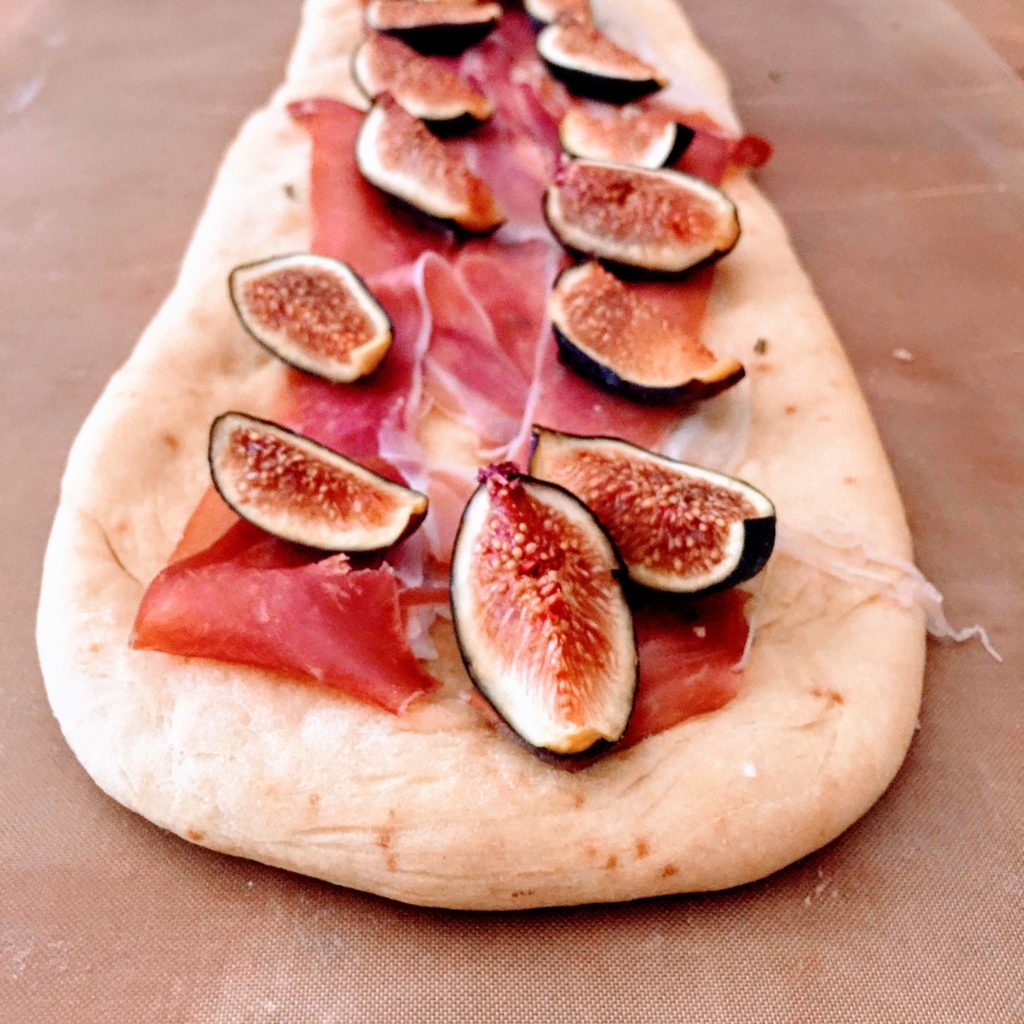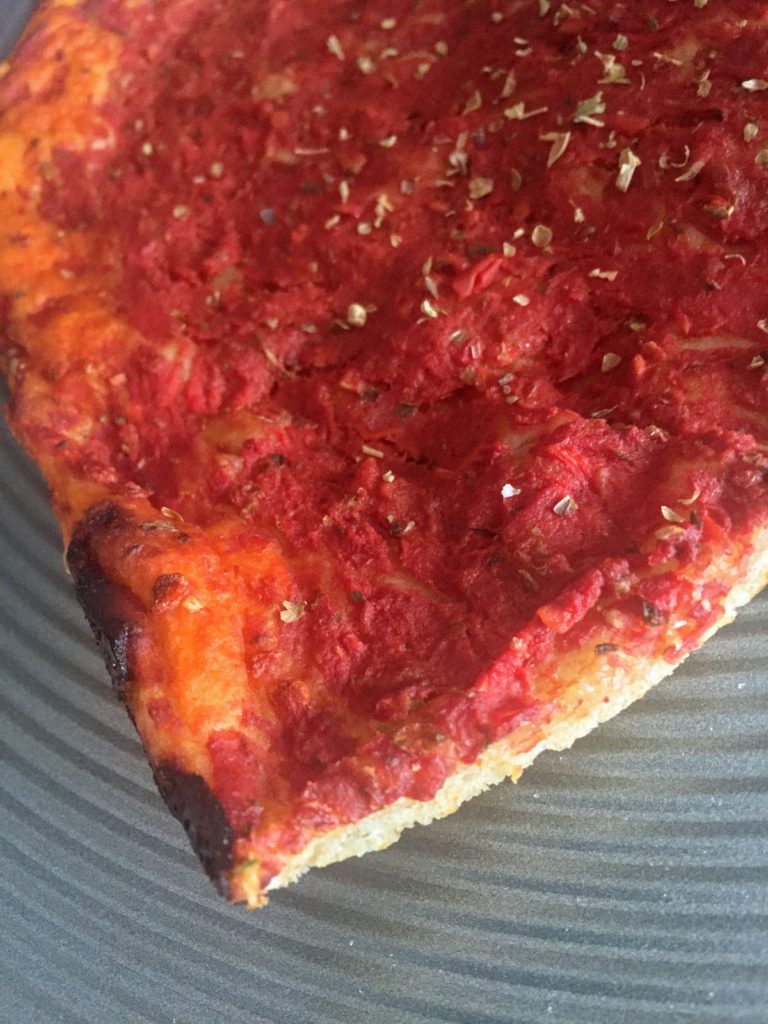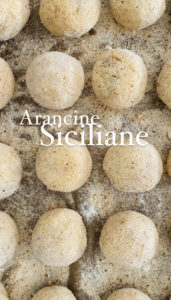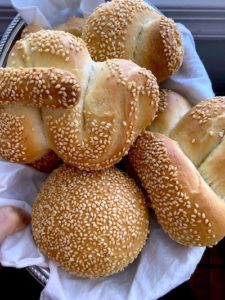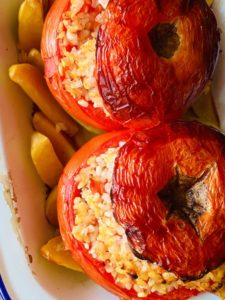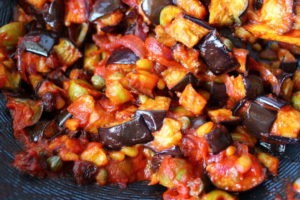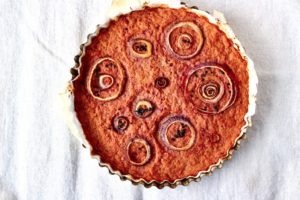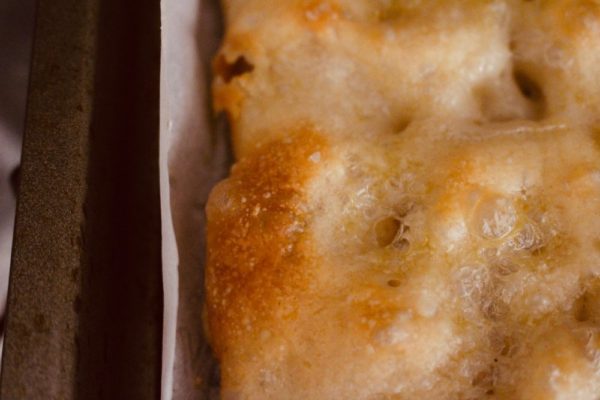
No-knead pizza bianca (or focaccia) using the Bonci method.
Pizza Bianca is a blonde, thick, luscious, spongy lady with a crunchy bottom, sprinkled with salt flakes that burst flavor in your mouth at each bite.
In Rome, we call it Pizza Bianca and she loved as much Pizza Rossa. In the rest of Italy, it is also known as Focaccia, but you know Romans, we like to be unique.
The Forno di Quartiere (the neighborhood’s bakery) was on the way to my school so every day, like every Italian kid, Mamma stopped to the bakery and got me a slice of pizza bianca wrapped in a parchment paper to eat during the break at 10 am.

If you don’t lick your greasy, salty fingers you only half enjoy it!
When I moved to Brussels I desperately missed pizza Bianca, so I tried every recipe until I found the Patron Saint of Bakers and Pizzaioli: Gabriele Bonci. It means I have been baking this pizza for 10 years, with any flour, any weather, any yeast, and any technique.
If you are in Rome you want to go to Pizzarium, his headquarter.
If you are home you want to make this Pizza Bianca.
It’s an almost 24 hours process (most of it it’s just waiting. Please do not be intimidated . You want your dough ripen in the fridge in order to get a bubbly, light and easy to digest pizza.
All you need is a big bowl, a wooden spoon, a bench scraper and the strenght and the will power to not giving up when you face the slimy soggy squishy dough of the first steps.
Ingredients:
This dough makes enough to fill two baking pans 11″x 16″
- 7 cups (1kg) bread flour (Bonci also suggests to use it 10% of whole wheat flour) + more for the surface
- 1 packet (7 g) active dry yeast
- 1 tbsp + 1 tsp (20 g) marine salt
- 700 ml water room temperature (if you are an expert baker go up to 800 ml)
- 3 tbsp (40 g) extra virgin olive oil + more for brushing/covering the dough before baking
Note: it’s a high hydration dough (it means it has a lot of water), so it’s useful to manage it with a pastry scraper like this one – for the first steps. It is very very helpful as until the dough develops gluten bonds it’s pretty much an unmanageable blob.
Directions:
1 In a very large bowl mix the flour with the yeast and salt. Whisk water and extra virgin olive oil and add it to the flour. Stir for 3 minutes with a wooden spoon. Cover with plastic and leave to rest for 10 minutes.


Yes, it’s sticky. And yes it’s watery. No worries it’s exactly how it should be!
2 After 10 minutes flip it out onto a lightly floured surface (if you struggle to handle it try to do it with your hands well oiled) and start making the folds: they are used to regenerate the dough through a light stretch and fold technique that helps to develop gluten bonds. Here is a helpful link from King Arthur Flour. We’ll do a total of 5 rigeneri or folding, one every 10/15 minutes.
Maestro suggests opening a bottle of buon vino for the waiting.
3 How to make the folding: place the dough in front of you and stretch it, gently, using your fingers. With the help of the scraper lift the dough up and fold it over itself. Make the same on the other side. Turn it 90° degrees and repeat the steps. Always gently.
I show you here:
4 Cover with plastic wrap and rest for 15 min, then repeat. For a total of 5 times.
After a couple of folds, you should be able to grab the dough with your hands. If not, keep folding with the help of the scraper and if needed oil your hands.
Bravo! You made it! The hardest part is done!
5 After the 5th fold, place the dough in a lightly oiled bowl, cover with plastic and leave the bowl in the fridge for at least 12 hours (it can stay more, I let it up to three days, and it gets a nice sourdough taste).
The best would be to put it in the lower part of the fridge (or the colder parto of your fridge), and the very best would be doing it in the evening so nobody will open the fridge and there will not be temperature changes.
The day after, take it out of the fridge and let rest to room temperature for 1 hour (or more if your fridge and kitchen are very cold).

6 When one hour passed cut in half the dough.
7 Oil the pan you choose and very, very gently put the dough onto without breaking the air bubbles inside (they are bubbles of flavors!) Using the tip of your fingers press gently (did I say gently?) the pizza down to the borders of the pan starting from the center.
I show you here:
8 The dough needs to rest 3 hours covered with plastic in a warm place or in the oven with the light on (always covered, never forget it).
9 Preheat the oven at 230 C°/446 F well before it’s time to bake the Pizza (she likes a very hot stable oven temp)
10 After the three hours, makes holes with your finger (gently! 😉 ) without breaking the bubbles and cover the dough with this mixture (dose for 1 pizza): 1/3 cup water, 1/3 cup extra virgin olive oil, and then sprinkle it with sea salt ( I <3 Maldon Sea Flakes).
11 Bake the Pizza Bianca at 230° C/ 446 F for 25 minutes in the middle rack of the oven or until bottom crust is crisp and golden brown when checked with a spatula. If the top crust is not golden yet, place the baking sheet on the upper rack and bake for 5 to 7 minutes more. This part to me is the most challenging because home ovens (at least mines) are very unstable, with hot spots, so I have to check it constantly.
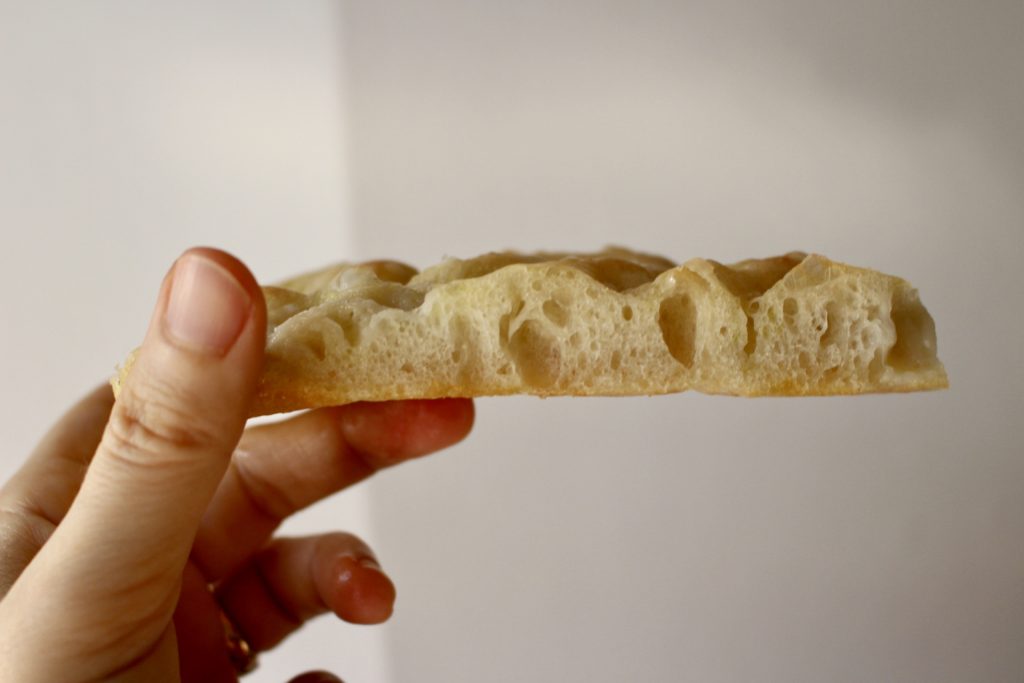
This pizza dough is versatile and the ideal base for every pizza you have in mind. I always use this recipe to make my Sfincione, the Sicilian pizza full of onions, anchovies, oregano, Pecorino Romano and breadcrumbs
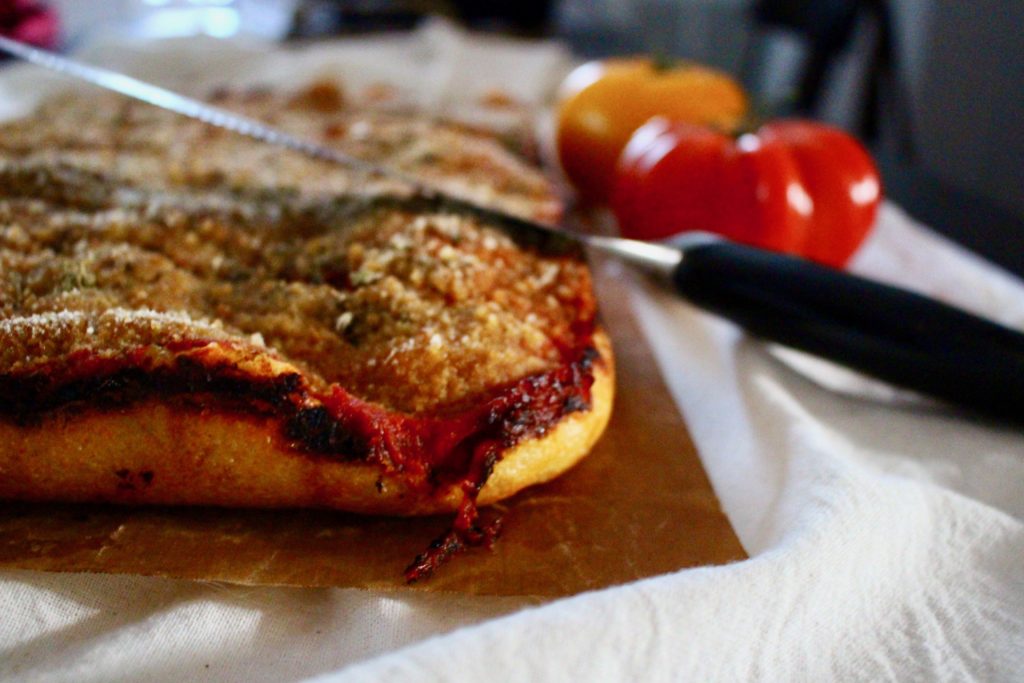
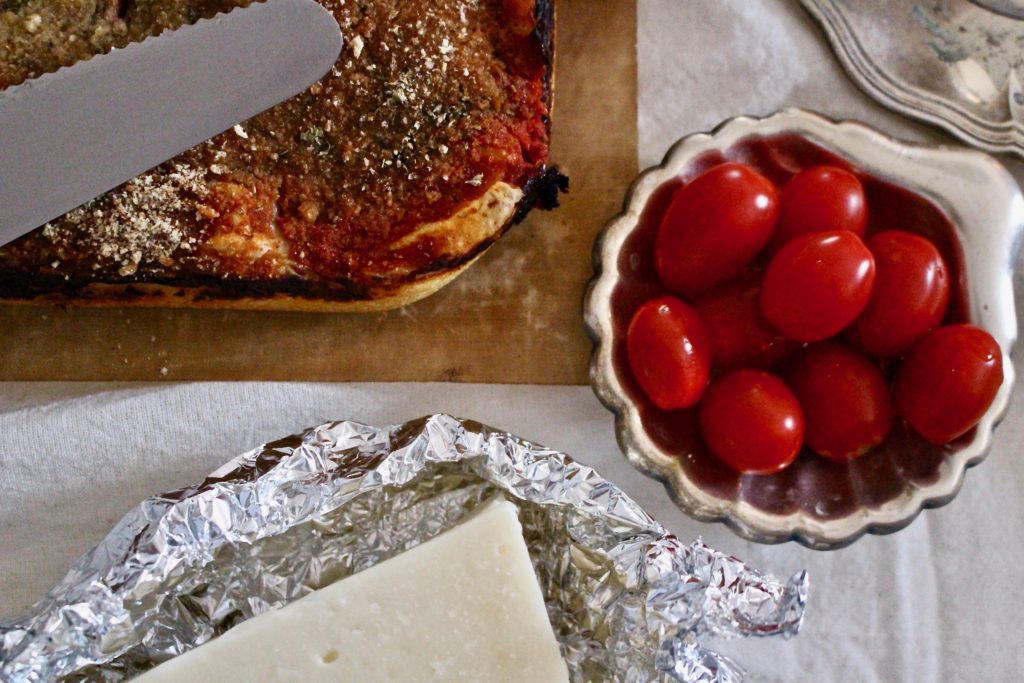
It’s graciously divine with sauteed broccoli rabe and crumbled sausage. It’s outrageously tasty with prosciutto and fresh figs. It’s scrumptiously delicious with just oregano and tomato sauce.

